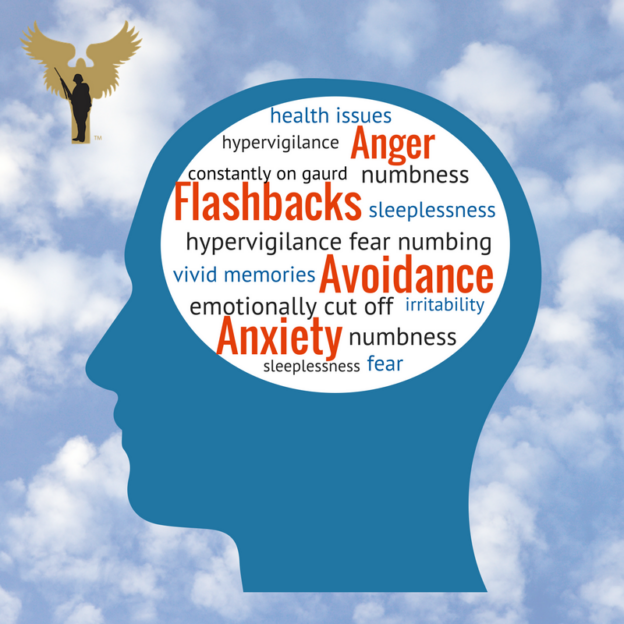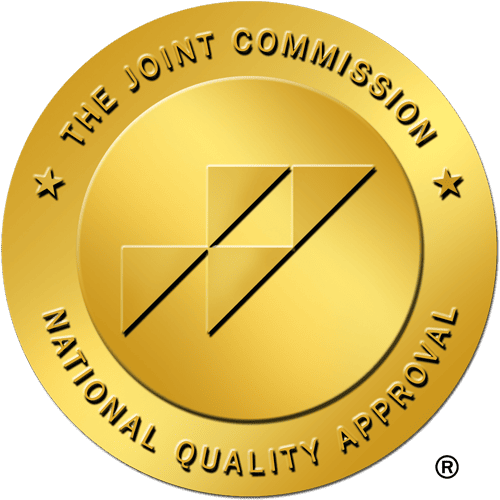Understanding the Connection between Creativity and Mental Health
Delving into the realm of psychology and neuroscience, it becomes apparent that creativity and mental health share an intricate bond, particularly in the expression and https://renewedlightmh.com/the-role-of-art-and-creativity-in-healing-depression-in-sea-isle-city/management of anxiety. Creativity, the ability to generate novel and valuable ideas, provides a profound psychological outlet for emotional expression through artistic expression. This inherent human capacity becomes instrumental in regulating emotions, resolving inner conflicts, and fostering self-awareness. It serves as a conduit connecting the conscious and the subconscious mind, often revealing sentiments and thoughts that language fails to articulate.
In individuals suffering from mental health issues, such as anxiety and depression, creative processes have been observed to provide therapeutic benefits. The act of creating art enables them to externalize their internal struggles, thereby reducing the intensity of their psychological burden. It fosters a sense of control over their emotional state, enhancing self-efficacy. Furthermore, neuroscience reveals that engaging in creative activities releases dopamine, a neurotransmitter associated with feelings of pleasure and satisfaction, which contributes to stress relief and mood enhancement. Thus, artistic expression acts as a natural antidote to emotional distress, offering a pathway to improved mental health.
Exploring the Role of Artistic Expression in Alleviating Stress and Anxiety
Artistic Expression have long been recognized as powerful tools to combat stress and anxiety. They offer an invaluable outlet for expression, allowing individuals to channel their thoughts and emotions into positive, creative outlets. This process not only provides a therapeutic escape from the confines of their mind but also helps to create a sense of calm and balance. Artistic activity, whether it involves drawing, painting, sculpting, or even dancing, can significantly reduce the levels of cortisol – the body’s primary stress hormone- thereby contributing to overall mental wellbeing.
Moreover, the act of creation also bestows upon individuals a sense of accomplishment and satisfaction that further aids in offsetting the mental strain. This gives rise to a positive feedback loop, wherein engaging in artistic pursuits leads to stress reduction, and this decrease in anxiety levels further fuels the desire to create. Not to mention, the process of creation often entails mindfulness and wholehearted engagement, two factors widely recognized for their effectiveness in stress management. The impact of art on mental health cannot be overstated and serves as a testament to the profound connection between human psychology and creativity.
The Importance of Artistic Expression Therapy in Ocean Township
Art therapy is rapidly gaining recognition in Ocean Township as an effective approach for supporting mental well-being. It serves as a creative outlet which empowers individuals to express hidden emotions and feelings, making it a powerful tool for those dealing with stress, anxiety, and other mental health issues. This creative form of therapy goes beyond traditional talk therapy by utilizing the process of artistic creation for therapeutic means. Its significance can’t be underestimated as it opens avenues for self-reflection, self-awareness, and understanding, emphasizing the transformative power of artistic expression in mental healing.
The response towards art therapy in the township has been overwhelmingly positive. Individuals are enthusiastic to participate in these sessions as the process is generally less intimidating than verbal communication and it fosters a soothing and relaxing environment. Further, the immediate accessibility of art therapy, being applicable to diverse age groups and conditions, makes it an invaluable asset in the arsenal of mental health care. Encouragingly, health professionals in the locale have also begun acknowledging the beneficial impact of this therapeutic methodology on their patients, thereby warranting the enhancement of art therapy services to fulfill the ever-growing demand.
How Creative Activities can Minimize Anxiety Symptoms
The potential of creative activities to mitigate anxiety symptoms has been substantiated by numerous studies and holds significant implications in the field of Mental Health. Engaging in activities such as drawing, painting, writing, music, and movement allows individuals to express their emotions, particularly those that are difficult to articulate verbally. Through this process, individuals can externalize their thoughts, experiences, and feelings, rendering them more manageable and palpable. This externalization often triggers a sense of relief and leads to a decrease in anxiety.
Equally significant, studies show that artistic engagement can induce a state of ‘flow’, where the individual becomes absorbed in the task at hand, forgetting about worries and fears. This state has often been associated with the release of serotonin and endorphins in the body, which are known to promote feelings of happiness and overall well-being. Furthermore, creative activities offer a sense of control and autonomy, providing a counterbalance to feelings of helplessness that are typically associated with anxiety disorders. Therefore, these activities can be powerful tools for anxiety management, deserving further exploration and integration into therapeutic practices.
Different Art Forms for Anxiety Management
Engaging in various art forms has proven to be a powerful approach toward managing anxiety. These art forms range across a broad spectrum, encompassing practices like painting, sculpting, coloring, and even creative writing. Each of these activities stimulate different aspects of the brain, allowing individuals to express their emotions freely. This form of self-expression can serve as a safe and non-verbal means of articulating anxieties, thus fostering a state of calm and relief.
On the one hand, painting and sculpting are linked to improving motor skills and focus, which can divert attention away from anxious thoughts. On the other hand, activities such as coloring and crafting, involve repetitive and rhythmic actions and these come with a soothing effect. Then there’s also the possibility of storytelling through creative writing. The creation and organization of thoughts into a narrative offer cathartic release and can provide significant insight into the individual’s perception of their own anxiety, hence aiding its management.
Furthermore, engaging in performance arts like dance, drama, or music can also be beneficial. These art forms not only provide a physical outlet for anxiety but also encourage social interaction and teamwork which can boost self-esteem and reduce feelings of isolation often associated with anxiety.
• Painting: This form of visual art allows individuals to express their emotions on canvas. The act of mixing colors and applying brush strokes requires concentration which helps in diverting attention from anxious thoughts.
• Sculpting: Manipulating clay or other materials into three-dimensional objects provides a tactile experience that stimulates the brain’s sensory areas. It promotes mindfulness as it requires focus on the present moment.
• Coloring: This simple yet effective activity involves repetitive actions that have a calming effect. Adult coloring books featuring intricate designs are widely available these days and are known to induce relaxation.
• Crafting: Engaging in crafts such as knitting, origami or beadwork involve rhythmic movements that help soothe the mind.
• Creative Writing: Whether it is poetry, short stories or journaling – writing offers an avenue for articulating anxieties without verbal communication. Organizing thoughts into words fosters understanding of one’s own feelings and experiences related to anxiety.
• Dance/Movement Therapy: Physical movement through dance can release pent-up tension while improving mood through increased production of endorphins (happiness hormones).
• Drama Therapy: Role-plays or theater activities allow individuals to explore different perspectives towards situations causing them stress, thereby promoting problem-solving skills.
• Music Therapy: Playing an instrument or simply listening to music can significantly lower stress levels by slowing down heart rate and reducing blood pressure. Creating music also offers opportunities for emotional expression without words.
In conclusion, various forms of art offer numerous benefits when used as tools for managing anxiety; they stimulate creativity whilst providing therapeutic relief from symptoms associated with this mental health condition.
The Science behind Artistic Expression and its Effectiveness
Art therapy holds a significant position in the broad interdisciplinary field of therapeutic practices, drawing upon its roots in both the arts and psychology. It provides an accessible means of communication, offering an alternative mode of expression to those who find it hard to express their feelings verbally. At its core, art therapy utilises the creative process associated with the exploration of one’s self, enhancing mental and emotional growth, and promoting a sense of personal wellbeing.
The effectiveness of art therapy is backed by a growing body of scientific evidence. Visuo-spatial tasks, which form an integral part of artistic activities, have been shown to trigger the regeneration of neurons in the brain, a process known as neurogenesis. This essentially results in improved mood and emotional stability. Furthermore, the emotional catharsis experienced during the creation of artwork helps in stress reduction, which plays a significant role in managing various forms of mental disorders, particularly anxiety and depression. In many ways, these artistic activities serve as a powerful tool that allows individuals to articulate emotions that are otherwise difficult to express, fostering mental resilience and emotional strength.
Community Art Programs in Ocean Township for Mental Health
In the small yet vibrant community of Ocean Township, support for mental health has found a unique medium in the form of art programs. These programs, designed for individuals of all age groups, utilize artistic activities as a tool for expression, introspection, and connection. From painting workshops to safe spaces for creative writing, they offer an array of opportunities for residents to explore their inner landscapes amid a supportive community ambiance.
The key objective of these initiatives is to facilitate mental well-being and resilience, particularly for those dealing with mental health issues such as anxiety, depression, or stress. They provide an environment where individuals can freely express their thoughts and emotions in various artistic forms, fostering a deep sense of personal understanding and healing. These programs have quickly gained popularity, their efficacy and benefits going beyond conventional therapeutic approaches, offering a testament to the healing power of art.
Personal Experiences: Success Stories of Art Therapy in Ocean Township
As we delve deeper into the labyrinth of art therapy and its potential benefits for mental health, anecdotal evidence from Ocean Township serves as a compelling testament to its effectiveness. One such case is of a 35-year-old woman suffering from chronic anxiety disorder. After participation in six months of routine art therapy sessions, she reported a significant reduction in her anxiety levels. Notably, she mentioned how expressing her feelings through painting helped her find a unique coping mechanism that traditional therapy wasn’t able to provide.
Another success story is of a 16-year-old high-school student diagnosed with chronic depressive disorder. Struggling with declining academic performance and social isolation, his encounter with art therapy through a community program in Ocean Township acted as a springboard for his recovery. He found solace in creating sculptures, which seemed to offer an outlet for his suppressed emotions. Over the span of a year, not only did his depression symptoms abate considerably, but he also displayed enhanced self-esteem and improved social interactions, highlighting the transformative power of art therapy.
How to Incorporate Artistic Expression into Daily Routine for Anxiety Relief
Engaging in artistic endeavors regularly can play a significant role in alleviating anxiety and promoting overall mental wellness. The process of incorporating these activities into a daily routine, however, demands strategic planning, commitment, and a keen appreciation of art. One effective strategy is to establish a fixed time for artistic engagements, preferably during periods of high stress, such as before a difficult task or the end of a hectic day. The choice of activities may range from sketching and painting to more sophisticated forms such as pottery and sculpture, depending upon individual preferences and accessibility.
Moreover, cultivating an environment conducive to creativity is equally important to ensure regular participation and efficiency of art-based therapy. This might include setting up a dedicated workspace at home or using ambient noise apps to mimic an artistic environment. Encouraging mindfulness during these activities, promoting full focus on the task at hand, and experimenting with different art forms to keep the process exciting and dynamic are other effective strategies. The goal should not be the perfection of the art form, but rather the therapeutic journey it presents. This perspective aids in eliminating performance anxiety and enriches the overall experience.
Future Perspectives: The Growing Recognition of Art Therapy in Mental Health Care
Art Therapy, once relegated to the peripheries of mental health care, has been steadily gaining recognition for its significant positive impacts on patients worldwide. Clinicians have come to appreciate its efficacy not just as a complementary support system, but also as a standalone therapeutic approach for various mental health disorders. The unique ability of art processes to open up non-verbal channels of communication makes it an exceptionally helpful therapy for those individuals who find it difficult to express their feelings or thoughts linguistically.
As we advance into the future, a noticeable shift in the landscape of mental health care can be observed as it moves towards a more holistic treatment regimen. Recognizing the inherent therapeutic value of creativity and self-expression, several leading mental health institutes are integrating art therapy into their traditional treatment protocols. Art therapy’s rise to prominence in mental health care is the direct result of years of rigorous clinical research and countless poignant success stories from patients. Whatever the future holds, the growing recognition of art therapy only makes our approach to mental health care more humane, effective, and comprehensive.




